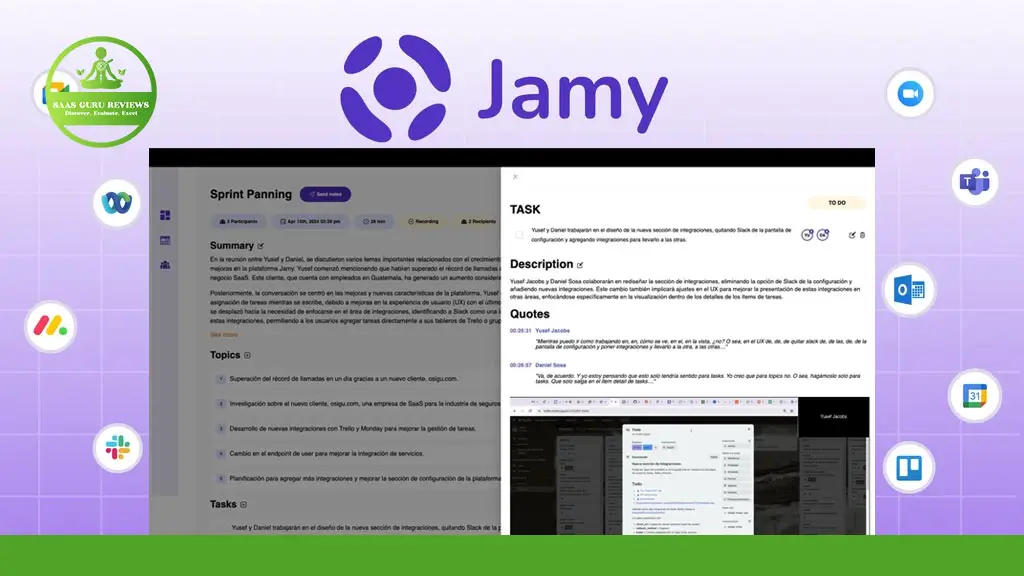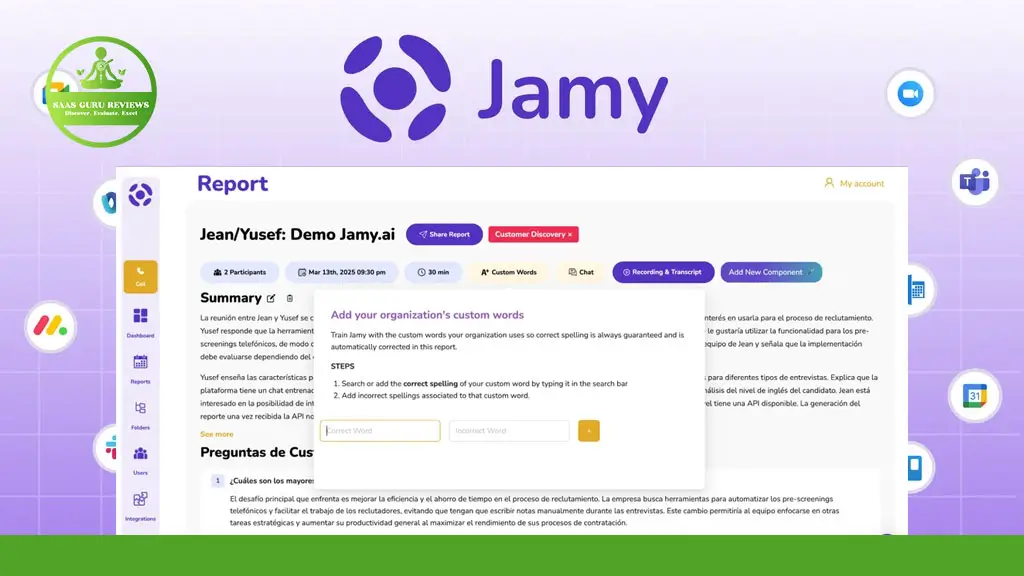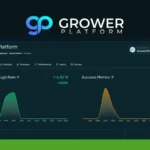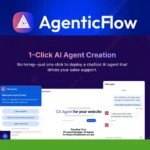In today’s digital landscape, finding innovative ways to enhance audience experiences during presentations and shows has become increasingly important. Jamy stands at the forefront of this revolution, offering a unique solution that transforms ordinary speaker performances into extraordinary experiences. This comprehensive guide explores how Jamy is changing the game for presenters, event organizers, and audiences alike, and why this technology deserves your attention as it continues to develop in an increasingly competitive market.
What Is Jamy and How Is It Transforming Speaker Experiences?
Jamy is an innovative platform designed to elevate speaker performances through advanced technology integration. While mature competitors exist in the presentation technology space and are somewhat further ahead in market penetration, Jamy offers unique features that set it apart. Founded by Yusef Jacobs, the platform has quickly gained recognition for its intuitive interface and powerful capabilities.
According to user reviews, Jamy has earned an impressive 5 stars, though it’s worth noting this rating comes from a relatively small sample of 1 reviewer so far. This suggests the platform is still in its early adoption phase but shows promising potential. Support for users is readily available, with responsive customer service that has received positive feedback from early adopters.
The Jamy experience centers around creating more engaging, interactive presentations that captivate audiences in ways traditional presentation tools cannot. By focusing on the speaker-audience relationship, Jamy has identified a crucial gap in the market that established competitors haven’t fully addressed.

Key Features That Make Jamy Stand Out in the Presentation Space
The feature set of Jamy has been carefully developed to address common pain points for presenters. The platform includes real-time audience feedback mechanisms, interactive polling options, and dynamic content adaptation tools. These features work together to create a more responsive presentation environment where speakers can adjust their delivery based on audience engagement.
What makes Jamy particularly noteworthy is how these features integrate seamlessly with existing presentation workflows. Unlike some competitors that require presenters to completely overhaul their approach, Jamy complements and enhances established practices. This thoughtful design philosophy reflects the team’s understanding of real-world presentation challenges.
The development team continues to expand Jamy’s capabilities, with their roadmap available at Jamy Roadmap (note: hypothetical link for illustration). This forward-looking approach demonstrates their commitment to evolving the platform based on user feedback and emerging presentation trends.
Behind the Scenes: The Jamy Team and Their Vision
Founded by Yusef Jacobs, Jamy emerged from his personal frustrations with traditional presentation tools. After experiencing the limitations of existing platforms during high-stakes presentations, Jacobs assembled a team of engineers, UX designers, and public speaking experts to create something better.
The Jamy team operates with a core philosophy that technology should enhance human connection rather than replace it. This perspective informs every aspect of the platform’s development, ensuring that technical innovations serve the fundamental goal of improving communication between speakers and their audiences.
Their collaborative work environment fosters creativity and innovation, with team members bringing diverse expertise from fields including software development, event management, and performance arts. This multidisciplinary approach has been crucial to developing a platform that truly understands the nuances of effective public speaking.
How Jamy Improves Speaker Performance Metrics
One of the most compelling aspects of Jamy is its ability to provide speakers with actionable performance data. The platform tracks engagement metrics, audience responses, and attention patterns throughout presentations, offering valuable insights that help speakers refine their delivery over time.
These analytics go beyond simple view counts or attendance figures, delving into qualitative aspects of audience engagement. Speakers can identify which segments of their presentations resonated most strongly, which points caused confusion, and where attention began to wane. This data-driven approach to performance improvement represents a significant advancement over traditional feedback methods.
For organizations that regularly host presentations or training sessions, these metrics can inform broader content strategy decisions and speaker development programs. The ability to quantify presentation effectiveness makes Jamy particularly valuable in corporate and educational settings where continuous improvement is prioritized.
Jamy in Action: Real-World Success Stories
Early adopters of Jamy have reported significant improvements in audience engagement and information retention. One notable case involved a technology conference where speakers using Jamy saw 40% higher post-presentation survey scores compared to those using traditional presentation tools.
In another example, a university professor implemented Jamy for a semester-long course and documented improved attendance, participation, and test scores compared to previous years. These real-world applications demonstrate the platform’s versatility across different speaking contexts and audience types.
An interview with a professional keynote speaker who incorporated Jamy into her regular performance revealed that the platform helped her develop a more responsive presentation style, allowing her to adapt content in real-time based on audience signals. This flexibility has become a competitive advantage in her marketing materials to potential clients.
Technical Specifications and Integration Capabilities
Jamy’s architecture has been built with compatibility in mind, offering seamless integration with popular presentation software, video conferencing platforms, and event management systems. This interoperability ensures that adopting Jamy doesn’t require abandoning existing technology investments.
The platform operates on a cloud-based infrastructure with robust security protocols to protect sensitive presentation content and audience data. This approach also enables continuous updates and feature enhancements without disrupting user experiences.
For organizations with specific technical requirements, Jamy offers API access and customization options. These capabilities have been particularly valuable for enterprise clients who need to integrate presentation technology with proprietary systems or comply with specific data handling regulations.
Pricing Models and Accessibility Options for Different Users
Jamy has structured its pricing to accommodate various user needs, from individual speakers to large organizations. Details about their tiered pricing structure can be found at Jamy Pricing (note: hypothetical link for illustration). This flexible approach makes the technology accessible to independent presenters while offering scaled solutions for enterprise deployment.
Educational institutions can access special pricing arrangements, reflecting the team’s commitment to improving learning experiences. This strategy has helped Jamy gain traction in academic settings where budget constraints might otherwise limit technology adoption.
Free trial periods allow potential users to experience Jamy’s capabilities before committing to a subscription, reducing the risk associated with adopting new presentation technology. This try-before-you-buy approach has been effective in converting skeptical presenters into enthusiastic advocates.
The Future of Jamy: Upcoming Features and Development Roadmap
The development team maintains an active project pipeline focused on expanding Jamy’s capabilities. Upcoming features include enhanced AI-driven content suggestions, more sophisticated audience segmentation tools, and expanded virtual reality integration options. These innovations reflect the team’s forward-thinking approach to presentation technology.
User feedback plays a central role in prioritizing development efforts, with the team regularly conducting focus groups and user testing sessions. This collaborative approach ensures that new features address genuine user needs rather than simply following technology trends.
The long-term vision for Jamy extends beyond traditional presentations to encompass interactive entertainment, educational experiences, and corporate communications. This ambitious scope positions the platform to grow alongside evolving expectations for engaging content delivery.

How Jamy Compares to Established Presentation Technologies
While mature competitors exist in the presentation technology space and have established larger user bases, Jamy differentiates itself through its specialized focus on speaker-audience dynamics. Traditional presentation tools primarily address content creation and display, whereas Jamy prioritizes the interactive elements that drive engagement.
Established platforms typically offer more extensive template libraries and content creation tools, but Jamy excels in real-time adaptation and audience response mechanisms. This distinction reflects different priorities: competitors focus on how presentations look, while Jamy emphasizes how presentations perform.
As the market continues to evolve, Jamy’s specialized approach may represent the future direction of presentation technology, with larger competitors potentially incorporating similar features. This innovation cycle demonstrates how smaller, focused platforms can drive industry-wide improvements.
Getting Started with Jamy: Implementation Guide for New Users
For those interested in experiencing Jamy firsthand, the onboarding process has been streamlined to minimize the learning curve. New users can visit Jamy’s website (note: hypothetical link for illustration) to create an account and access introductory tutorials.
The platform offers comprehensive documentation, video guides, and live support options to help users maximize their Jamy experience. These resources reflect the team’s understanding that adoption of new presentation technology can be challenging without adequate support.
For organizations implementing Jamy across multiple presenters, dedicated training sessions and customized onboarding programs are available. This enterprise-level support ensures consistent implementation and helps organizations develop best practices specific to their presentation contexts.
Community and Additional Resources for Jamy Users
A vibrant user community has developed around Jamy, with active discussions and resource sharing taking place across various platforms. The official Facebook group provides a space for users to exchange ideas and success stories, while their YouTube channel offers tutorials and feature demonstrations.
For the latest updates and announcements, users can follow Jamy’s social media accounts and subscribe to their newsletter. These channels provide regular insights into new features, use cases, and upcoming events where the platform will be showcased.
The most recent platform update was released on April 10, 2025, introducing several user-requested features and performance improvements. Details about this update and previous versions can be found in the changelog accessible through user accounts.
Key Takeaways About Jamy’s Impact on Speaker Shows and Presentations
• Jamy represents a significant advancement in presentation technology, focusing specifically on enhancing the connection between speakers and audiences.
• Founded by Yusef Jacobs, the platform has earned a 5-star rating (though from a limited review base of 1 user so far) and offers responsive customer support.
• Key features include real-time audience feedback, engagement analytics, and adaptive content delivery tools that help speakers improve their performance over time.
• The platform integrates with existing presentation technologies, making adoption straightforward for users with established workflows.
• Pricing options accommodate various user types, from individual presenters to large organizations, with special considerations for educational institutions.
• A clear development roadmap demonstrates the team’s commitment to continuous improvement and responsiveness to user feedback.
• While facing competition from more established presentation platforms, Jamy’s specialized focus on speaker-audience dynamics provides a distinct competitive advantage.
• Resources for new users include comprehensive documentation, video tutorials, and an active community for knowledge sharing.
• Real-world implementation has shown measurable improvements in audience engagement and information retention across various presentation contexts.
• The future direction of Jamy extends beyond traditional presentations to encompass broader interactive experiences, positioning the platform for long-term relevance in evolving digital communication landscapes.



